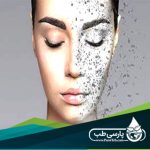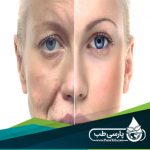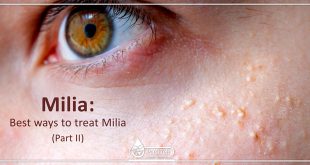Skin aging: Aging is part of the lifetime and during it the body changes a lot.
Usually, these changes begin at the age of 40. As the age grows, our skin also changes.
How old skin and when our skin begins to aging depends on several factors, including:
Sunlight is one of the other factors in aging skin
Exposure to the sun for a long time is the main cause of skin damage. Sun damage to the skin and due to ultraviolet light (UV) that damages elastin tissue in the skin, resulting in a loss of skin elasticity and wrinkles.
Other factors affecting skin aging include:
- Loss of adipose tissue between the skin and the muscles (subcutaneous support)
- Stress
- The effect of gravity with aging on the skin
- Day care of the skin
- Obesity
Skin changes due to aging include:
 Dry skin
Dry skin- Thinning the skin
- The skin becomes easily bruised
- Wrinkles
- The appearance of brown spots that are known as aging spots
- Falling skin around the eyes, eyelids and cheeks
Dry skin is the cause of loss of skin water due to decrease activity of the skin’s glandular area and hormonal changes. Sometimes, for example, kidney disease, liver disease and diabetes can exacerbate skin dryness.
Can skin aging be prevented?
 No, aging skin is an inevitable process. Of course, as we have mentioned, delaying this process can be done by using care methods but care should be taken from the young age.
No, aging skin is an inevitable process. Of course, as we have mentioned, delaying this process can be done by using care methods but care should be taken from the young age.
For example, use of sunscreen creams with SPF of at least 30 and suitable suits when exposed to intense sunlight, proper diet, no use Unfair fast food and fast food, having a healthy lifestyle and avoiding stress can greatly reduce the impact of the environment on the skin and delay the process of aging skin.
 Parsi Teb Physical and Mental Health Journal
Parsi Teb Physical and Mental Health Journal 





